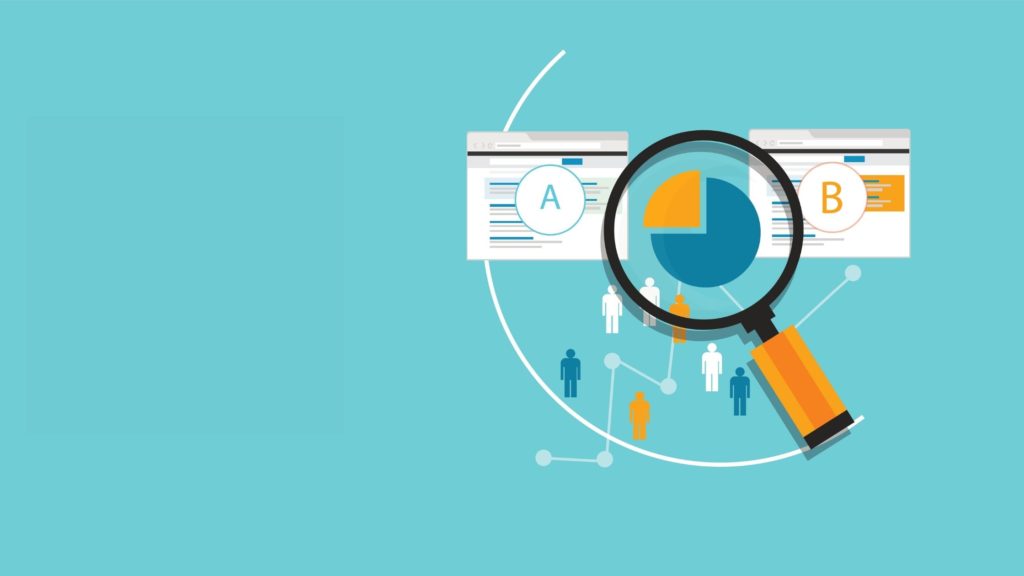The complete guide to marketing optimization

We recently published our 2025 Global Benchmark Report, which offers an insightful look at the current email marketing landscape. It’s filled with data drawn from billions of campaigns and highlights key trends. For instance, we’re seeing increased send volumes alongside rising engagement rates, the growing significance of SMS, and how vital customer data is for personalization.
While this report provides valuable context, it’s essential to focus on your own metrics. Optimization is crucial for continuous improvement, thereby helping your brand stay competitive. It’s about learning what truly resonates with your audience through regular testing and refinement.
In this guide, we explore what marketing optimization is and provide practical strategies. We’ll also show you how Dotdigital’s features can help you achieve better results with every email you send.
What is marketing optimization?
Marketing optimization is all about tweaking and improving your marketing campaigns to get the best possible results. It’s like fine-tuning a car engine to make it run smoother and faster. Instead of just guessing what might work, you use data and analysis to figure out what’s actually effective and what isn’t.
It’s not a one-and-done deal; it’s an ongoing process of testing, analyzing, and making adjustments. The goal is to make your marketing more efficient and effective, whether that’s driving more traffic to your website, generating more leads, boosting conversion rates, keeping customers around longer, or getting the most bang for your buck.
Think of it as a scientific approach to marketing. You set clear goals, identify key performance indicators (KPIs), make changes, and then measure the impact of those changes. This way, you can learn what really clicks with your audience and keep refining your strategies to get better and better results.
Key marketing optimization strategies
So, how do you actually do marketing optimization? Let’s dive into some of the most effective strategies you can start using today.
1. A/B split testing
Ever wonder if your marketing could be doing more? Like, a lot more? That’s where split testing comes in. It’s like a friendly competition between different versions of your marketing materials to see which one your audience loves best. Think of it as a way to let your customers vote with their clicks.
Why is split testing so effective?
Imagine you have two ideas for an email subject line. Instead of guessing which one is better, you can use split testing. You send one subject line to half of your audience and the other subject line to the other half. Then, you can see which one gets more opens. Just like that, you know which one works better. Then you can use this knowledge when writing future subject lines.
Split testing is incredibly useful because it eliminates the guessing game from the process. Instead, you’re using real data to make informed decisions. This means:
- Data-driven decisions: Forget subjective opinions and “best guesses.” Split testing provides concrete data to support your marketing choices, leading to more effective campaigns and a higher return on investment. You’re no longer relying on instincts; you’re basing your decisions on actual results.
- Improved performance: By consistently identifying and implementing the strategies that work best, you can enhance your campaigns over time and achieve progressively better results. It’s a process of incremental improvement, where each test builds on the insights gained from the previous ones.
- Deeper audience understanding: Split testing offers valuable insights into your audience’s preferences, behaviors, and pain points. By understanding what motivates your audience, you can tailor your messaging for maximum impact and build stronger relationships.
- Increased ROI: Optimized campaigns lead to higher engagement rates, improved conversion rates, and ultimately, a stronger return on your marketing investment. By focusing on what works, you maximize the effectiveness of your marketing spend.
Split testing made simple with Dotdigital
Dotdigital’s split testing tool makes it easy to create different variations of your campaign. You can adapt subject lines, ‘friendly from’ names, and campaign creatives to test and compare.
Once your campaign is live, you can easily see in the reporting tab which version performed better and use that as a basis for your next test.
Just remember to test one thing at a time so you can be sure which change generated the boost in engagement.
Split testing ideas to get you started
Are you not sure where to begin split testing? Here are some ideas to kickstart your efforts:
Subject line variations
Experiment with different lengths, tones, keywords, and formats. Try incorporating emojis, posing questions, creating a sense of urgency (FOMO), or personalizing subject lines.
Friendly from name
Test different sender names, titles, or even brand personas. Vary your friendly from sender. Perhaps you send a newsletter – give it a name. Sending an end of year message from your CEO? Use their name as the sender. Adding variation and context in this way takes moments but can really engage your audience.
First name personalization
Test the difference between ‘Hey there’ and ‘Hey, first name’. Adding a simple personalization shouldn’t take you long and you’ll soon be able to see if it’s worth it.
Email copy
Explore different headlines, body copy, tone of voice, and storytelling approaches. Test different lengths of copy and see if shorter, more concise messages perform better than longer, more detailed ones.
Call-to-action (CTA)
Test out your CTA buttons. Something as simple as changing it from ‘learn more’ to ‘buy now’ or vice versa can see really different results. Play around with CTA language, placement, and frequency to gain a stronger understanding of how to drive clicks.
Images and visuals
Test different image styles, sizes, placements, and even the use of GIFs or videos. See what kind of visuals best capture your audience’s attention and drive engagement.
Send time optimization
Experiment with sending your campaigns at different times of day or days of the week. Analyze your data to identify the optimal send times for your specific audience.
2. Conversion rate optimization (CRO)
Conversion rate optimization (CRO) is all about boosting the percentage of website visitors who take a desired action, like making a purchase, signing up for a newsletter, downloading a resource, or requesting a demo. It’s about making the most of your existing traffic by turning more visitors into active users.
Landing page optimization
Your landing page is often the first impression potential customers have of your brand. It’s where they arrive after clicking on an ad, email link, or social media post. Optimizing these pages is key to maximizing conversions. Focus on:
- Clear and concise messaging: Your headline and copy should quickly communicate your value proposition and what you’re offering. Avoid jargon and highlight the benefits for the visitor. Keep it short and to the point.
- Compelling call-to-action(CTA): Your CTA should stand out and clearly indicate the action you want visitors to take (e.g., “Shop Now,” “Get Your Free Trial,” “Download the Guide”). Use action-oriented language and make the button visually appealing.
- Persuasive design: The layout, colors, and imagery should create a visually appealing and trustworthy experience. Ensure your landing page is easy to navigate and mobile-friendly.
- Social proof: Include testimonials, reviews, or case studies to build trust and credibility. Seeing that others have benefited from your product or service can significantly influence conversion rates.
Personalization
Personalization is a necessity for boosting conversion rates. By tailoring the user experience to each individual visitor, you create a more engaging and relevant journey that drives conversions. Dotdigital’s powerful personalization engine, Fresh Relevance, provides the advanced tools you need to use your customer data and deliver truly personalized content and offers.
Dynamic personalized banners
Your hero banner is prime real estate. It’s the first thing visitors see, and it needs to grab their attention and instantly communicate your site’s value. Dynamic personalized banners allow you to display the most relevant images and messaging to each visitor, based on their past behavior, demographics, or other key data points. This means your headline will be more likely to keep your visitors engaged.
Product recommendations
Fresh Relevance takes product recommendations to the next level, allowing you to customize not just what products are shown, but also how they’re recommended. This granular control lets you optimize for different stages of the customer journey and maximize engagement. Here are just a few strategies you can implement:
- Homepage: Experiment with different recommendation strategies on your homepage. A/B test “Bestsellers” against “New Arrivals” to discover which drives longer browsing sessions and higher click-through rates.
- Product listing pages: Make shopping a breeze by reducing friction. Show recommendations that are perfectly tailored to each shopper, preventing them from feeling overwhelmed by too many choices.
- Product detail pages: Turn every product detail page into an opportunity for upselling and cross-selling by suggesting complementary products that enhance the main item.
- Cart pages: Give shoppers a final chance to discover more items they might love before they check out.
Countdown timers
Countdown timers can be a great way to create a sense of urgency and inspire immediate action from your visitors. By showcasing limited-time offers or deals that are about to expire, you tap into the psychology of scarcity, which can help boost conversions.
Form optimization
Forms are often a necessary step in the conversion process, but they can also be a major source of friction. Optimizing your forms is essential for making it as easy as possible for visitors to convert. Consider these best practices:
- Keep it short and sweet: Only ask for the information you absolutely need. The longer the form, the more likely visitors are to abandon it.
- Clear field labels: Use clear and concise labels for each field to avoid confusion.
- Easy-to-use fields: Make sure the form fields are easy to fill out on all devices.
- Progress indicators: If the form has multiple steps, use a progress indicator to show visitors how far they have to go.
- Error messages: Provide clear and helpful error messages if a visitor enters incorrect information.
- Security and privacy: Reassure visitors that their information is safe and secure. Display security badges or privacy policy links.
3. Customer segmentation
Customers are not all alike; they have unique needs, preferences, and motivations. Trying to communicate with everyone using the same generic message is like shouting into a crowd—you’re probably going to go unnoticed.
That’s where customer segmentation comes in. It’s a key way of optimizing your marketing. Segmentation helps break down your audience into smaller groups with similar traits, allowing you to customize your messaging and make a bigger impact.
Each audience persona has its own set of preferences. Tools like a single customer view (SCV) and persona lookalike tools are really helpful in uncovering these differences and creating more effective segments.
Single customer view (SCV)
A SCV is a central hub for all your customer data. It collects information from different sources—like website interactions, purchase history, email responses, and CRM data—to create a complete picture of each customer.
Having this thorough understanding helps you spot patterns and preferences that might otherwise go unnoticed. For example, you might discover that one segment of customers prefers a casual, conversational tone in your marketing, while another segment responds more positively to a formal approach.
Finding your lookalikes with persona tools
Once you’ve identified these preferences, you can use a persona lookalike tool to create segments based on these insights. This tool helps you find other customers who share similar characteristics with your identified personas. By segmenting your future sends to fit these preferences, you can tailor your messaging to resonate more effectively with each group.
Segment your customers
By digging deep into your results and using these tools, you can create highly targeted segments that reflect the unique preferences of your audience. This allows you to optimize your campaigns for each segment, leading to higher engagement and better overall performance.
Measure the metrics that matter
Tracking the right metrics is important for understanding how well your optimization efforts are working. Here are some key performance indicators (KPIs) you should keep an eye on:
- Open rate: This is the percentage of recipients who opened your email. If your open rate is low, it might be time to rethink your subject line or sender name. Even though overall open rates are less reliable since Apple’s updates, tracking your open rates from send to send will give you an insight into each campaign’s performance.
- Click-through rate (CTR): This measures the percentage of recipients who clicked on a link in your email. A high CTR indicates that your email content and call-to-action are compelling.
- Click-to-open rate (CTOR): This is the percentage of recipients who opened your email and then clicked on a link. CTOR gives you a deeper insight into how engaging your email content is for those who open it.
- Conversion rate: This is the percentage of recipients who completed a desired action, like making a purchase, signing up for a newsletter, or downloading a resource. Your conversion rate is a key indicator of your campaign’s overall success.
- Unsubscribe rate: This is the percentage of recipients who unsubscribed from your email list. A high unsubscribe rate could signal problems with your email content, frequency, or targeting.
- Bounce rate: This is the percentage of emails that were not delivered to the recipient’s inbox. High bounce rates can hurt your sender reputation and should be addressed promptly.
By keeping track of these metrics, you can gain valuable insights into your audience’s behavior and preferences, allowing you to fine-tune your marketing for even better results.
Optimize your marketing with Dotdigital
Marketing optimization is a continuous journey, and Dotdigital is your ideal partner every step of the way. By using the strategies in this guide and tapping into Dotdigital’s features, you can enhance engagement, boost conversions, and reach your marketing objectives. With tools for A/B testing, segmentation, automation, and analytics, Dotdigital equips you with everything you need to get the most out of your marketing.



